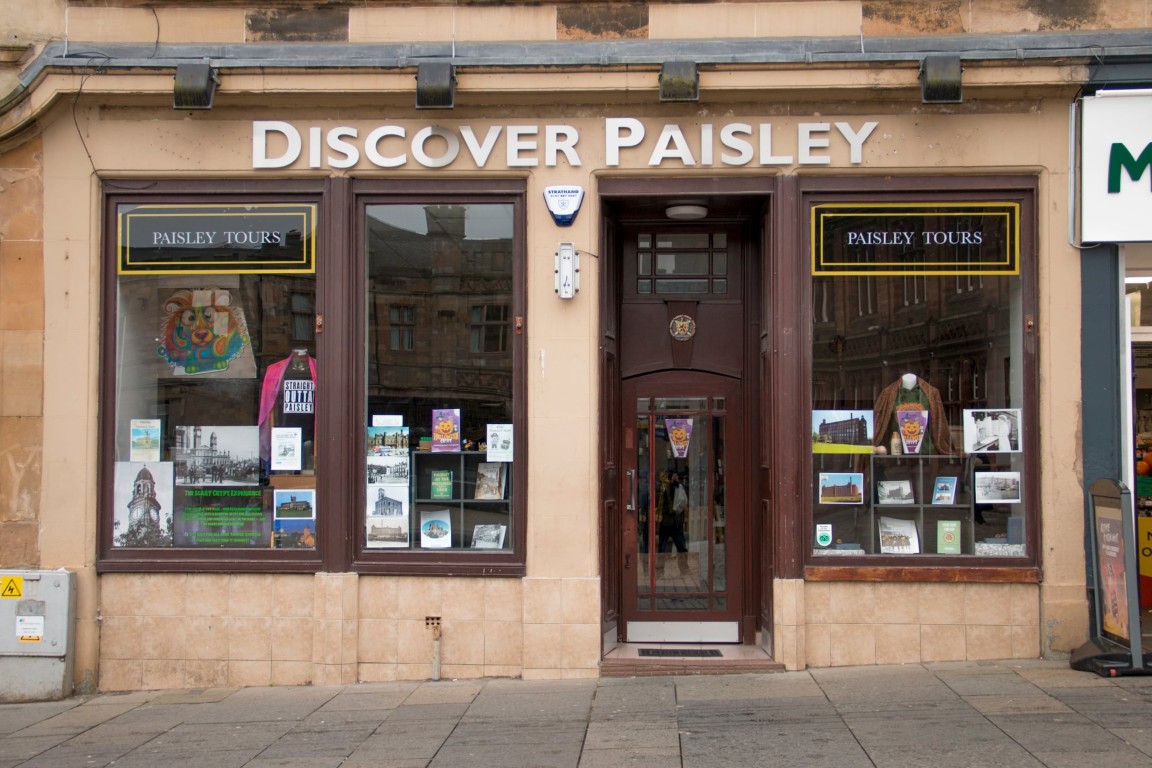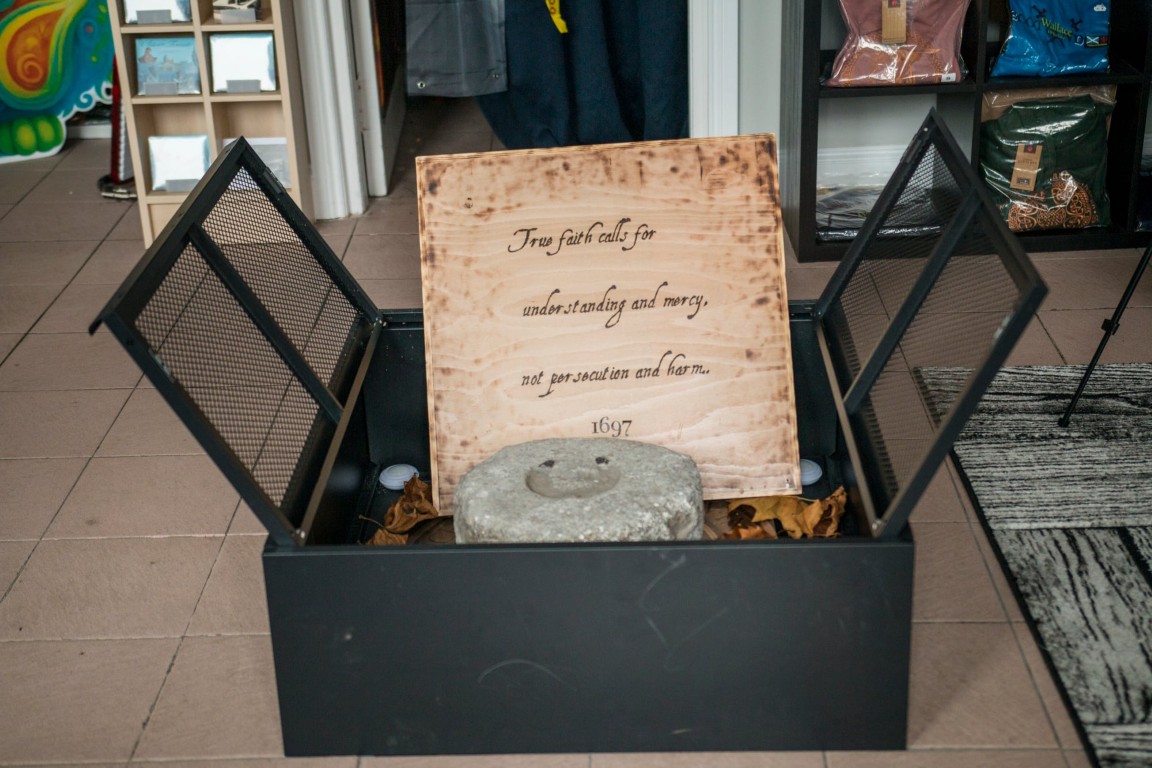A historic stone linked to one of Paisley’s most significant and tragic events has been rediscovered after being lost for 16 years and is now back on display in the town.
The circular granite memorial, known as the Maxwellton Cross tondo, once marked the burial site of the ashes of those executed during the Paisley Witch Trials of 1697, the last mass witch execution in Europe.
The stone was removed during street works in 2008 and believed to have been lost or destroyed. It has now been recovered through a local heritage connection and returned to Paisley, where it is being preserved at the Discover Paisley Hub, home of Paisley Tours, at 2 County Place.
The recovered tondo is thought to date back to the Victorian period and is carved from solid granite. Its age and authenticity have been confirmed by those involved in the 2008 replacement works, who recognised its historical importance.
The rediscovery has been described as a major moment for Paisley’s heritage, adding a new layer to how the town has remembered the victims of the witch trials over the centuries.
In 1697, eight people from Renfrewshire were accused of witchcraft. Seven – four women and three men – were executed by strangulation and burning at the stake, while another man took his own life in prison.
According to local legend, one of the condemned, Agnes Naismith, placed a dying curse on the town before her death. Their ashes were buried at Maxwellton Cross, sealed under an iron horseshoe to “keep the curse at bay”.
The recovered stone once surrounded that horseshoe and remained part of the site for generations. A newer bronze memorial tondo, designed by sculptor Alexander Stoddart, was installed in 2008 and continues to mark the site today.
Gayle Pollock of Renfrewshire Witch Hunt 1697 SCIO said: “This piece of stone denotes where innocence was executed and a dying woman’s curse was spoken upon Paisley. If not for the Witch Trials of 1697 there may have been no thread industry and Paisley would be different. This is an important piece of Paisley’s history that people now have the chance to see and reflect on.”

Photo: The Discover Paisley Hub on County Place, where the recovered Maxwellton Cross witch trials memorial stone is now on display
Photo Credit: David Cameron
The stone has been placed in a respectful indoor display alongside a carved wooden panel by local craftsman John McGuiness, featuring the inscription: “True faith calls for understanding and mercy, not persecution and harm. 1697.”
A second inscription quotes Albert Einstein: “The most beautiful thing we can experience is the mysterious. It is the source of all true art and science.”
Gavin Divers, founder of Paisley Tours, said: “This isn’t just a stone – it is a witness to injustice. It connects us to real people who suffered and died here in Paisley. We are honoured to care for it and ensure it remains on display here in Paisley, where it belongs.”
The Maxwellton Cross tondo can now be viewed by the public at the Discover Paisley Hub, and visitors can also take part in the Paisley Witches Walking Tour, which tells the story of the 1697 trials through the original locations and historical evidence.
Gavin added: “We are committed to handling this history with dignity. The accused were victims of fear and injustice, not magic. This display is about education, remembrance, and giving Paisley’s history back to its people.”
Photos by David Cameron

